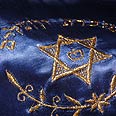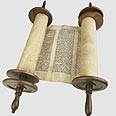

More than seven hundred youth attending Jewish summer camps around the United States were surveyed in a study conducted by Dr. Erik Cohen, of Bar-Ilan University's School of Education. Dr. Cohen revealed his findings Sunday morning at a special School of Education conference marking the opening of Israel's academic year 2009-10 and Bar-Ilan University's Jim Joseph Education Building.
This new, state-of-the-art facility was officially dedicated on Tuesday, October 20, on the Bar-Ilan University campus, in the presence of Education Minister Gideon Sa'ar.
The survey consisted of a list of 132 symbols developed by Dr. Cohen covering many areas – from the talit, the Talmud, God and the Star of David to Soviet Jewry, the Holocaust, Steven Spielberg and Woody Allen. Respondents were asked to rate which of the symbols expressed an aspect of their personal Jewish identity, and which were the most important to them.
Over three-quarters of the population indicated the symbols God, bar or bat Mitzvah, and religion with Judaism. "This finding is in line with the observation that American Jews, even those who are non-religious, tend to emphasize the religious aspect of Jewish identity; that is, they think of Judaism primarily as their religion, not as their culture or nationality," said Dr. Cohen, who has studied Jewish identity in the Diaspora for many years.
Religious symbols vs. universal values
In comparing the participants of three of the major streams of Judaism, he found that those attending Orthodox camps were significantly more likely to select symbols related to Jewish religious practice, to the Holocaust, to Israel and to discrimination, while participants in Conservative camps were most likely to select universal values such as democracy, co-existence, tolerance, ecology, humanism and peace.He attributed this to the Conservative Movement's emphasis on universal values within a Jewish context.
Participants in Reform camps were more likely to select items related to Jews' accomplishments in the non-Jewish world (such as wealth and success).
"Interestingly, those at the Reform camps were also most likely to select the symbol of Anne Frank, indicating a somewhat difference attitude towards the Holocaust that that of the Orthodox campers, who were more likely to select Auschwitz as symbolic of their Jewish identity," said Cohen.
"Similarly, the religious symbols of the Star of David and Hannukah were most likely to be selected by those at the Reform camps, again indicating a different approach to the Jewish religion in comparison to those at the Orthodox camps, who were more likely to select symbols such as the Talmud and Torah study," he added.
Another important finding in the study is that the population of youth in summer camps is often not homogeneous, according to Dr. Cohen. Surveyed youth were asked to define their religious affiliation, and there was a significant number of youth attending these camps whose official affiliation was not in congruence with their personal affiliation.
The Orthodox camps, he found, were the most homogeneous, with only 7% of the campers describing themselves as non-Orthodox. On the other hand, 29% of youth at Conservative camps consider themselves Orthodox, Reform, or "just Jewish", while 28% of Reform campers think of themselves as Conservative or "just Jewish".
According to Dr. Cohen, in addition to reflecting differences in Jewish identity, educational programming at US Jewish summer camps must also reflect the non-homogeneous nature of many of these camps.
The study, conducted during the summers 2005-2007, included 731 participants, aged 14-16, in summer camps throughout the United States.















